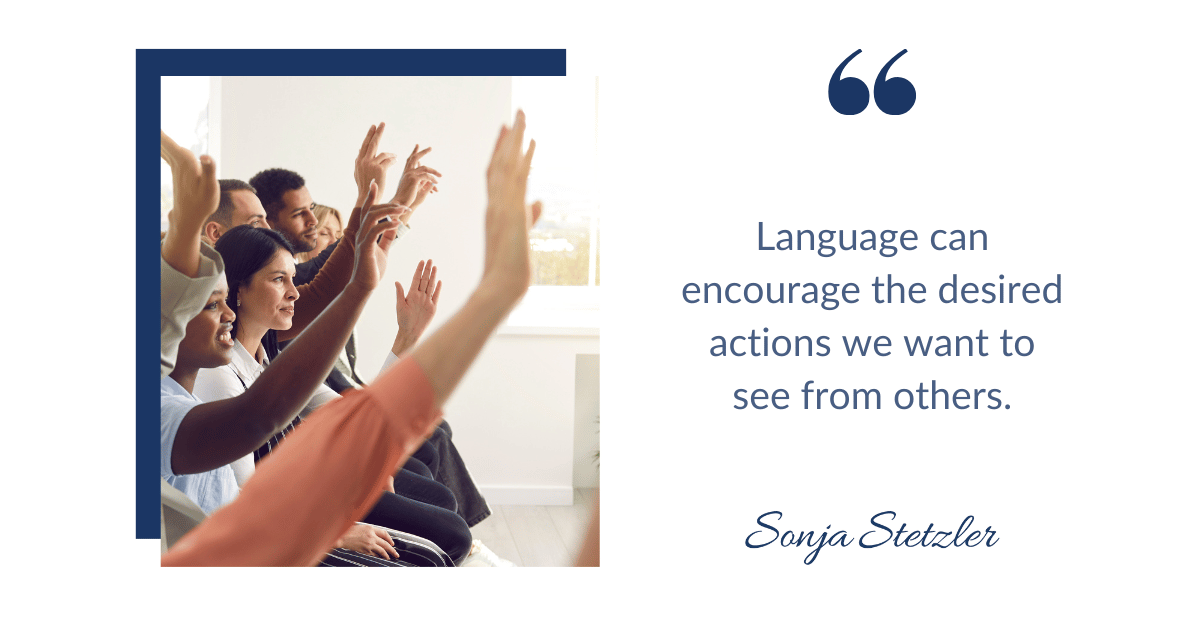When you speak with power, you engage your audience while elevating your confidence.
Over the past several months, I have worked with several clients who were looking to speak with more confidence. Jonah Berger’s most recent book, Magic Words: What to Say to Get Your Way, calls this ‘speaking with power’. Our use of language can provide the perception that we are self-assured and knowledgeable, and therefore, audiences are more likely to listen and be persuaded by what we say.
Language can encourage the desired actions we want to see from others. How does one ‘speak with power?’
Speak with power using these 3 strategies:
1. Use the word ‘You’.
Using the word, ‘you’, focuses the audience’s attention and makes them feel like the speaker is talking directly to them. For example, as I start my presentation, I now say, “In the presentation, you will learn….” instead of, “In the presentation, I will share…”
Can you feel the difference when you use the word, ‘you’? When you incorporate the word, ‘you’, in your presentation, your presentation becomes more audience-centric.
2. Eliminate ‘filler words’.
“Filler words’ are the non-words we use, such as ‘um’, ‘ah’, ‘like’, ‘so’, etc…that come out generally as we are transitioning between thoughts as we speak. Saying too many filler words can make us sound less confident, uncertain, and can undermine our effectiveness.
Most people who use filler words are unaware that they are saying them. So the first step to eliminating them is to become aware.
Record yourself as your practice your presentation or have a colleague listen as you practice. Then work on how you transition from point A to point B. Use a pause instead of saying a ‘filler’.
3. Use a present verb tense.
The technique is subtle, however, research has shown that using the present tense can greatly increase your impact.
Using the present tense suggests that something is true and enduring, while using past tense suggests that something was true at a particular point in time and may longer be true.
For instance, saying ‘the solution worked well’ implies a limited timeframe in which the solution worked. Saying ‘the solution works well’ communicates the solution continues to work well and will work well in the future.
Communicating in the present tense conveys a sense of confidence and universal truth.
Try these strategies in your next presentation and notice the difference they can make in elevating your confidence and in your audience’s confidence in YOU!
Working on a presentation for a conference or upcoming meeting? Not sure how to navigate a difficult conversation with a co-worker, direct report, or maybe your manager? Does your team need help with coming together on a project? These are all areas where I can help!
Reach out for a Discovery call to see how Communication Coaching could be helpful for you and/or your team!

